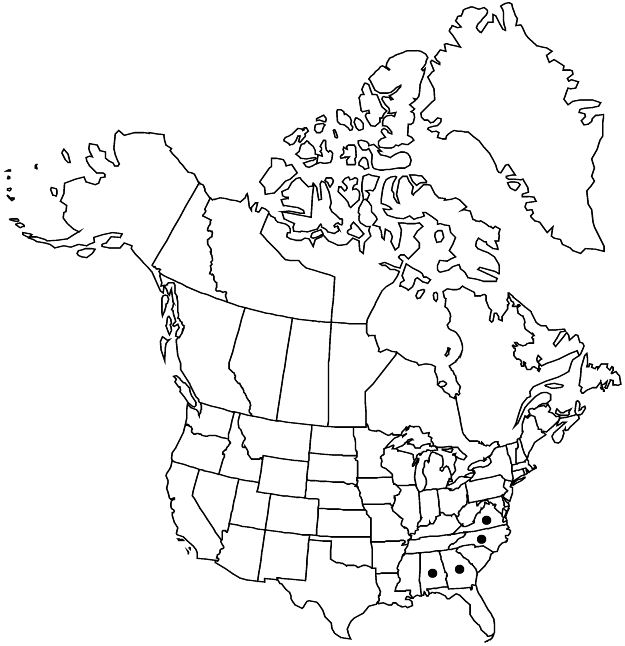Crataegus craytonii
Biltmore Bot. Stud. 1: 121. 1902.
Shrubs, 20–30 dm. Stems: twigs: new growth reddish green, densely hairy, 1–2-years old dark gray-brown, older gray; thorns on twigs ± straight, 2-years old blackish, very slender, 2–3 cm. Leaves: petiole 1–2 mm wide, length 25–40% blade, winged distally, pubescent, glandular; blade ovate to broadly elliptic, 4–8 cm, base cuneate to truncate (suddenly narrowed to petiole), lobes 3 or 4 per side often obscure, sinuses sometimes quite deep, lobe apex acute, margins strongly serrate, teeth gland-tipped, veins 5 per side, apex acute, surfaces rough-hairy. Inflorescences 3–7-flowered; branches pubescent; bracteole margins stipitate-glandular. Pedicels pubescent. Flowers 20 mm diam.; hypanthium densely pubescent; sepals 7 mm, margins glandular-pectinate to glandular-serrate, abaxially pubescent; stamens 20, anthers pale-yellow or cream; styles 3–5. Pomes red to ruddy, broadly ellipsoid, 7–10 mm diam., pubescent; sepals on collar, ± reflexed; pyrenes 3–5.
Phenology: Flowering Apr; fruiting Sep–Oct.
Habitat: Wooded areas
Elevation: 100–300 m
Distribution

Ala., Ga., N.C., Va.
Discussion
Of conservation concern.
Crataegus craytonii is a rare shrub from a few scattered localities. The species resembles C. biltmoreana in its hairiness but has usually larger, differently shaped leaves, 20 stamens, and red to ruddy pomes.
Selected References
None.
Lower Taxa
"thin" is not a number."winged" is not a number."adnate" is not a number."dm" is not declared as a valid unit of measurement for this property.